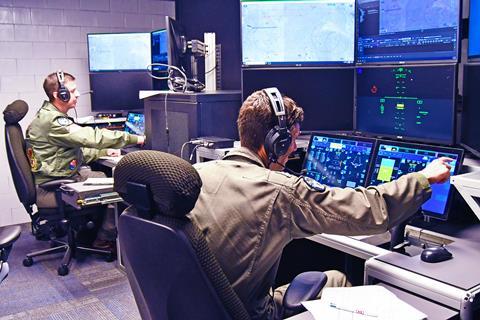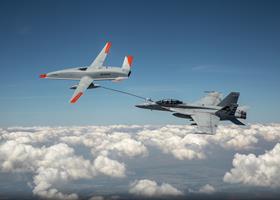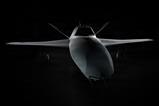The US Navy (USN) has completed its first test flight using an uncrewed aircraft control station that will be installed on the service’s fleet of aircraft carriers.
In a demonstration event on 7 November, navy personnel at NAS Patuxent River, Maryland, used a land-based Lockheed Martin MD-5E Unmanned Carrier Aviation Mission Control Station (UMCS) to oversee the flight of a General Atomics Aeronautical Systems MQ-20 Avenger uncrewed jet in California.
The navy has already begun fitting the control station in its aircraft carriers, with the first example installed aboard the USS George HW Bush in August. That system will be used to control a variety of future ship-based uncrewed aircraft, with the first target being the Boeing MQ-25 Stingray autonomous refueller.

Although the uncrewed MQ-25 has not yet been fielded, the navy is already training its first crop of ground- and ship-based Stingray operators, which the service has branded “air vehicle pilots” (AVPs).
Despite operators being referred to as pilots, Boeing’s MQ-25 is intended to launch from USN aircraft carriers and fly pre-loaded tanking support missions without flight control input from human aviators.
MQ-25 AVPs will monitor the aircraft’s operations, rather than directly control its flight.
Those personnel managed the recent MQ-20 demonstration flight, using Lockheed’s proprietary MDCX autonomy technology, developed by the company’s secretive Skunk Works unit, to integrate the UMCS control station and the General Atomics jet.

“This was a huge step for unmanned naval aviation,” says Lieutenant Steven Wilster, an MQ-25 AVP. “This demo showcased UMCS’s first live control of an unmanned air vehicle and… the team is paving the way for integrating critical unmanned capability across the joint force.”
Lockheed describes the demonstration as a “pathfinder that helps to advance the complex technology necessary to enable crewed and uncrewed teaming”.
The test event spanned a distance of more than 2,300 miles (3,700km), with the MQ-20 located at a General Atomics facility in El Mirage, California, while the control station was situated across the continent on the US East Coast.
General Atomics says the autonomous flight was managed using bi-directional communications via a low-earth-orbit satellite data link.
“The team efficiently and safely demonstrated aircraft flight control from another government agency’s control station,” says General Atomics president David Alexander.
Although earlier generations of uncrewed combat aircraft, such as the General Atomics MQ-1 and MQ-9, are remotely piloted over such distances, the latest effort is unique in that it is focused on platforms that will fly autonomously without requiring human input.
Navy officials say the ship-based control station will be “critical” to controlling the jet-powered tanker from aircraft carriers, providing the ability to autonomously land aboard the floating air bases using the ship’s arrestor wire system. Boeing is also testing software that would allow MQ-25s to be controlled in flight by Boeing F/A-18 fighter pilots.
The company delivered its first MQ-25 test article to the navy in March, with operational aircraft undergoing assembly at Boeing’s F-15EX production line in St. Louis, Missouri.
Under the latest schedule, the navy plans to reach initial operational capability on the MQ-25 fleet in the second half of 2026, with 13 aircraft delivered.































